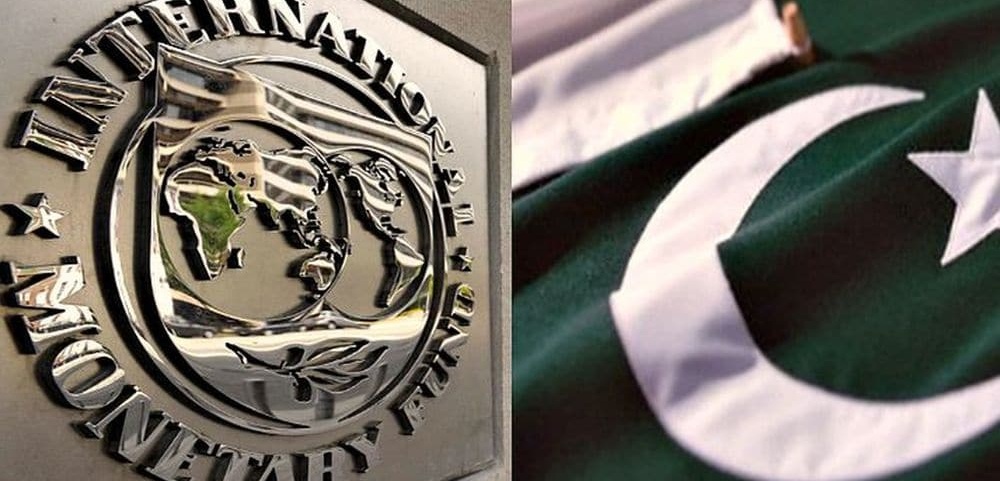Alwaght- Since Donald Trump’s assumption of power at the White House last year, Pakistani-American relations were hit by diplomatic chill and the two sides engaged in verbal clashes and tensions. Washington froze its annual military and financial aid to Islamabad, and now the tensions are dragged into aid packages of the International Monetary Fund (IMF) to the Pakistani government.
Last week, the US Secretary of State Mike Pompeo attacked the IMF help to Islamabad, claiming that the Pakistani officials use the money to pay their debts to the Chinese government. Islamabad reacted to the Pompeo’s remarks, asserting that it was Islamabad's job to decide how to spend the money.
Many analysts argue that the dispute over the IMF funding to the Pakistani government is dragging Pakistan to the China-US trade war, started over the past few months by Trump administration imposing tariffs on the Chinese goods, though the recent Islamabad-Washington tensions should not be all blamed on Sino-American commercial battle.
Pakistan and IMF
The IMF has its own standards that require implementation before it can help world governments in the form of loans and aid packages. These standards need to be complied with as the process to provide the financial help starts. For example, one condition is that the provided money should not be spent on military purchases or provide military budgets. The supplied money should be used to push ahead the development plans with the priority to complete the technical and constructional projects.
According to the statistical data, since 1980, Pakistan designed 14 development programs that made it eligible to receive $6.7 billion loan from the IMF. The country is asking for a new loan as it sets the foundation for a common economic corridor with China.
The Financial Times revealed this week that Pakistani officials had drawn up plans to ask the IMF for a $12 billion bailout soon after Imran Khan comes to power as the country’s new prime minister.
Considering the IMF spending standards, the Pakistani economic venture with China does not contradict the terms of the bailout. This gives rise to the notion that the US resistance to the loan to Pakistan is politically-motivated, stemming from the fact that China, a rival economic power to the US, is party to the Pakistani infrastructural projects.
US concerned about China-Pakistan economic corridor
Over the past two years, Pakistan’s economic growth severely slowed down. As a consequence, its national currency value dropped, forcing Islamabad to seek international financial credit to get the economy back on the track.
China, Pakistan’s eastern neighbor, is responding to the Pakistani officials help calls. Beijing has pledged to set up a $57 billion credit line to Islamabad to help neighboring country finish its incomplete projects. A part of the credit is expected to be provided via the “China-Pakistan Economic Corridor”, which the Pakistani officials hope would transform their country’s economy.
The initiative is so significant that some analysts call it game-changing. It is the biggest ever joint initiative launched by Beijing and Islamabad. The initial budget for the project is said to be exceeding $46 million. Many Pakistani politicians find the program a considerable backing to the nation’s economy.
The economic corridor is also useful for China, facilitating easier access of Beijing to Persian Gulf, Africa, Europe, and Central Asia. The venture also provides China with unique opportunity to deepen economic bonds with Turkmenistan, Uzbekistan, Kyrgyzstan, and Tajikistan. It helps create a new economic and political order via promoting the trade routes as well as economic and cultural interactions. So, Washington grows fear about an economic corridor that is expected to give Beijing strong toehold in the region.
Moreover, regarding the role of this corridor in the closeness of Pakistan-China, one can figure out to what extent the US wants to set up hurdles ahead of it. Last year, China delivered two type 054A frigates to Pakistan army, a deal signaling that Islamabad is fast transforming into Beijing’s strategic ally, with the peak of their cooperation exhibited by the economic corridor.
Ongoing Trump-Islamabad tensions
The US opposition to the IMF funding to Islamabad comes only a few days after parliamentary election in Pakistan concluded with Imran Khan's Tahreek-e-Insaf party taking lead. Imran Khan is a political leader known for his anti-American tendencies. But tensions between the two countries date back to late August last year when Donald Trump unveiled his strategy on Afghanistan war, in which he brazenly lashed out at Islamabad, accusing the Pakistani leaders of backing terrorism in Afghanistan.
The announcement ushered in a chilly period in the two former allies’ ties, bringing them down to the lowest level. This situation moved Islamabad leaders to move closer to China.
In the new conditions, Washington may choose to build pressure on the new Pakistani administration to get Islamabad back to its side. But the new ruling party is one of the most anti-American ones of the country.
Therefore, the resistance to IMF bailout may put strains on Pakistan, but it does not seem likely that the new leader, always blasting the US drone strikes in the tribal areas of Pakistan, will bow to the American pressures and return to Washington-led camp, especially that the past alliance with the Americans was not beneficial to the Pakistani leaders and only brought forth security costs and public discontentment which hit a peak in northern Pakistan as the government turned a blind eye to the unquestioned US military activities in the north.



























